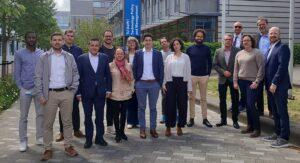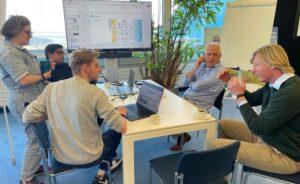Celí Kiyomi Okumura recently applied the City Blueprint Approach in the Greater Rio de Janeiro. In this interview, she shares her learnings.
- What makes the tool unique in your eyes?
The tool can encompass the main sanitation issues that impact the urban water cycle, helping to prioritize actions that need to be covered to improve the water management of a city.
- What does the tool offer? Which benefits and solutions?
The tool can provide a quick analysis of the water management of a city and indicate the main gaps that need to be addressed. Additionally, the results can be ranked and compared to other cities, including best practices that have been adopted. Therefore, although cities are unique, by sharing experiences (good and bad ones), similar issues can be adapted and addressed accordingly to a local level, and thus speed and improve the urban water management.
- Where did you implement the tool?
The tool has been applied to assess the Greater Rio de Janeiro (GRJ), which is composed of 22 municipalities with 13.1 million inhabitants. The GRJ is placed in southeastern Brazil and presents a tropical semi-humid climate with extreme rainfall during summer and spring. Although the GRJ is the second-largest greater city area and the second most important financial center in Brazil, it faces uneven distribution of goods, services, and infrastructure throughout its territory. Flood events have often affected urban areas and have been aggravated by poor sanitation and environmental degradation.
In 2018, the Rio de Janeiro Government delivered a Strategic Urban Plan, in which sanitation was one of the main axes assessed. Each axis provided a diagnosis, and a multidisciplinary action plan was designed, aiming for a desired future by 2040.
As the results of the tool matched the sanitation diagnosis, the tool was applied to a future scenario, assuming the sanitation actions plans have been fully implemented by 2040 and forecast the potential improvement of the sanitation status.
- What did you learn?
The accuracy of the results relies on the data source available, and in large countries like Brazil, a national data source may not reflect a city accordingly. Also, due to the tool’s transdisciplinary approach, it was possible to build a framework interrelating water with social, economic, and environmental areas and prospecting paths for sustainable development.
- What are your conclusions and recommendations?
The tool is an excellent kick-off to assess the water management of a city, and an excellent opportunity to have an overview of the transdisciplinary areas that impact urban water management. Therefore, it clearly shows all required stakeholders that need to be engaged to build an efficient water management plan, in other words, it is key to count with a supportive Governance that enables sustainable urban growth by integrating urban plan, urban design, sanitation, mobility, economic expansion, with strong social participation.


